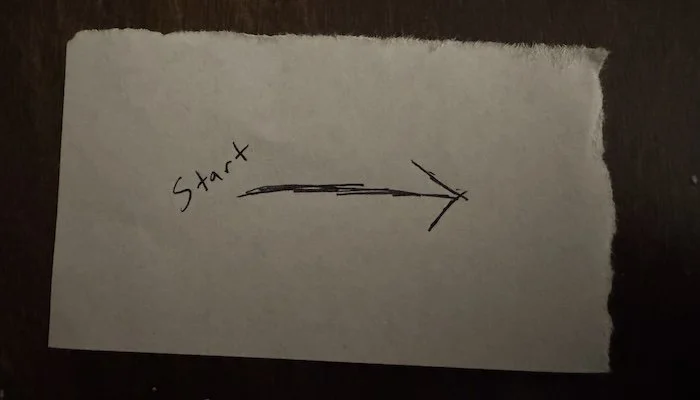Mailbag #152
/I really enjoyed “Out of the Minds of Babes” this week. I had my first child earlier this year (he’s seven months now), and I’ve been playing with baby inspired presentations like using the Little Hand during my wife’s pregnancy to send a “Can’t wait to meet you mommy” note, or doing The Baby Who Knows with a thumper. Have you written more about this theme, or do you have other baby related presentations you can point me to? I was thinking of doing something with a haunted deck by briefly leaving a deck in his large crib but not entirely sure how to present it if we can’t “see the baby cutting to the card”, maybe just leaving him safely alone for a minute might work and when we return “he found the card”. —GM
I think you've identified most of my writing on using kids in performances. Also check out “Kids and Animals” in the JAMM #7.
I like the haunted deck idea. If you have a baby monitor camera, it might be fun to set him on the floor with the deck, leave the room for a few seconds, come back and the deck is cut to the card. "How does he do that? Wait, let's check the mentor." And the deck is seen to cut itself. You can then spin that into either, Our baby's room is haunted. Or, I think he cut the deck with his mind.
A couple months ago [Joe Rogan] had Oz Perlman on his show and it went pretty viral, specifically because Oz guessed Joe's ATM PIN.
It was an interesting interview but Oz Perlman has always rubbed me the wrong way and I finally figured out why.
The problem I have with Oz, and many mentalists, is that they're never "off". I know you talk about blurring the line between when the performance ends and normal life begins but a lot of mentalists do it differently and I'm not sure how to describe it. I know a lot of mentalists do genuinely get good at cold reading and picking up on micro-expressions.
But Oz (and many other mentalists) do this thing that bugs me where they present themselves as a master of reading people. And a lot of them talk about magic tricks like that was an immature phase of playing around with "tricks" and "props" but now they've graduated into the "real thing", which feels very disingenuous to me.
Anyway, I was just kind of wondering what you think. I feel conflicted because I do like your approach of kind of blurring the line between performance and your day to day life but I feel like there's a line between your approach (which is essentially like an immersive fiction), and just straight up claiming that you're a master of reading body language and that you've moved beyond "simple tricks". —AO
Yes, to be clear, when I talk about blurring the line between magic and real life, I don’t mean blurring the fact that it’s a trick. I mean making the magic feel more naturally woven into your interactions so it doesn’t live behind a glass wall labeled “Now I’m doing a trick.” Instead, the edges of performance and reality overlap a bit so moments of genuine interaction become part of the trick, and elements of the trick spill back into normal conversation. I think that kind of integration makes for richer experiences. But the goal isn’t to fool anyone into thinking it isn’t a trick—it’s just to make the trick feel more vital.
And I, too, will tell people that what they’re seeing is something “beyond” simple tricks. Unlike Oz, when I do it i’m trying to remove myself from the equation. I want people to engage with a more fantastical idea than that what they’re watching is just sleight-of-hand.
Perhaps if I was approaching strangers and doing this, you could say I was lying to them. But the people I perform for understand this is a way of framing the experience and setting the stage so they can buy in as much as they want. I’m not expecting them to walk away saying, “I just experienced a 100% genuine demonstration of a procedure that induced déjà vu.” But by letting these experiences grow out of normal, genuine human interactions, there is a feeling that maybe they can’t dismiss everything as “just a trick.” That’s where I like to leave the people I perform for: knowing it’s most likely a trick, but never able to be 100% certain—always toying with their belief in some small recess of their brain.
As for what Oz does…. I haven’t watched the interview you reference, or much of his other work. But if it’s as you suggest, then yes, it’s just essentially lying. Couching your presentations in semi-believable premises is fine to do in performance. But it’s weird when people take that “off stage.” You could argue that an interview like that IS a performance, and this is just him being “in character.” Okay. Sure. But is he just… never out of character in public situations? If so, that’s not a character, that’s a persona you’ve adopted and you kind of have to live a lie.
Magicians eat that stuff up. Like the guy who spent decades pretending to be Chung Ling Soo when he was really just some American whitey. Magicians romanticize that kind of commitment. They don’t understand it’s the life of a sad psychopath. Smearing on greasepaint every day because you don’t think the real you is enough? That’s not admirable, it’s bleak.
But again, I don’t give a shit. Sure, the premise is retarded: “I can tell by your body language you’re thinking of your Aunt… Suzie!” It’s like, huh? How the fuck would that work? Saying “body language” is the equivalent of saying, “now I wave my magic wand.” It’s a way of expressing you just want to get on with the trick. It can work in corporate-esque performance environments where no one expects you to show too much of a personality anyway.
But be wary of doing stuff like this as an amateur in social situations. If you try to present yourself in your life as someone who’s really reading body language, or truly psychic, or an incredible card mechanic, or a brilliant psychological manipulator, and someone figures out a trick you do, it ruins your whole persona. You’ll come off as a total dork.
Someone can figure out a trick I do, and it might ruin the trick or lessen the experience. But it doesn’t completely undermine who I portray myself to be. There’s a great comfort in that.







